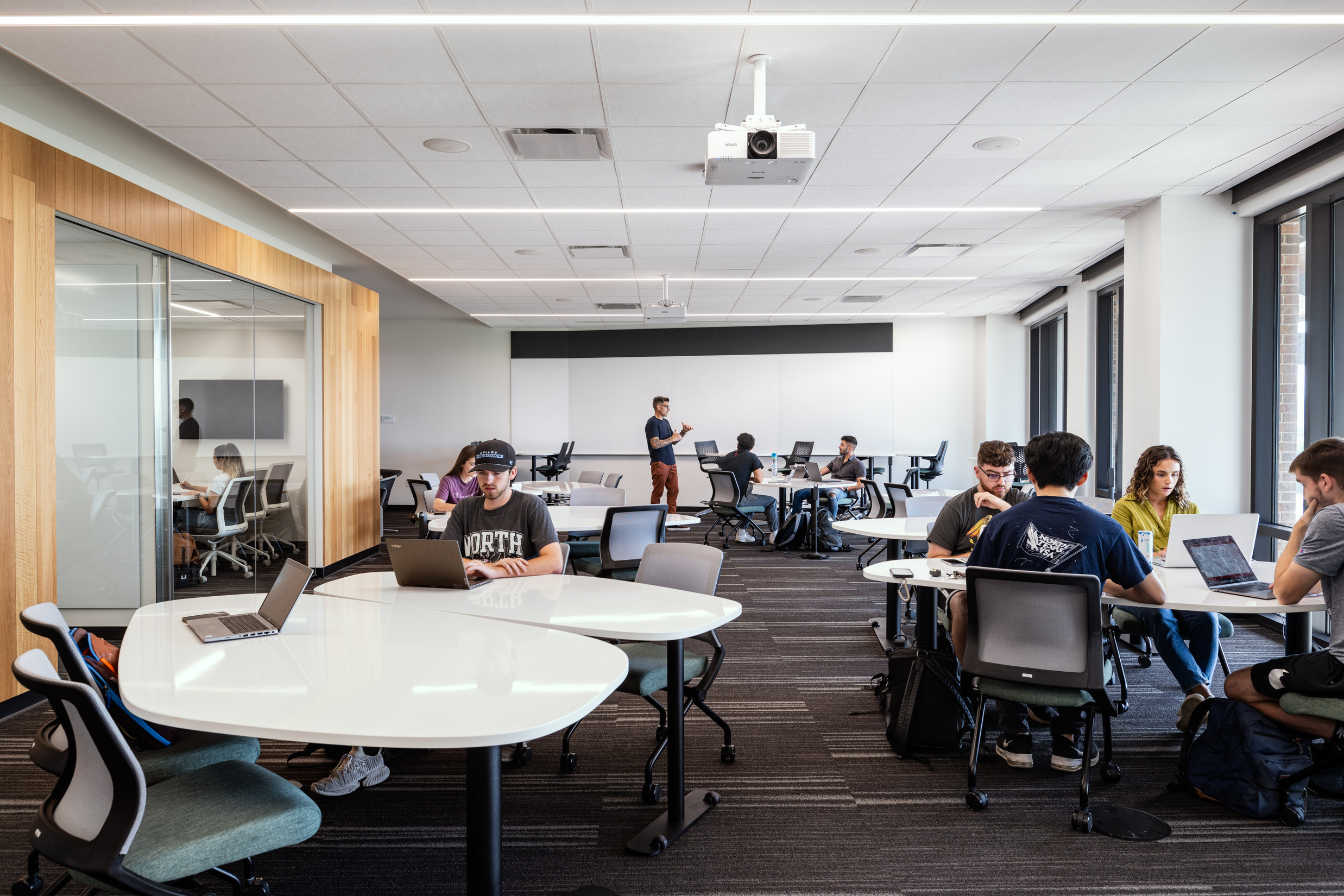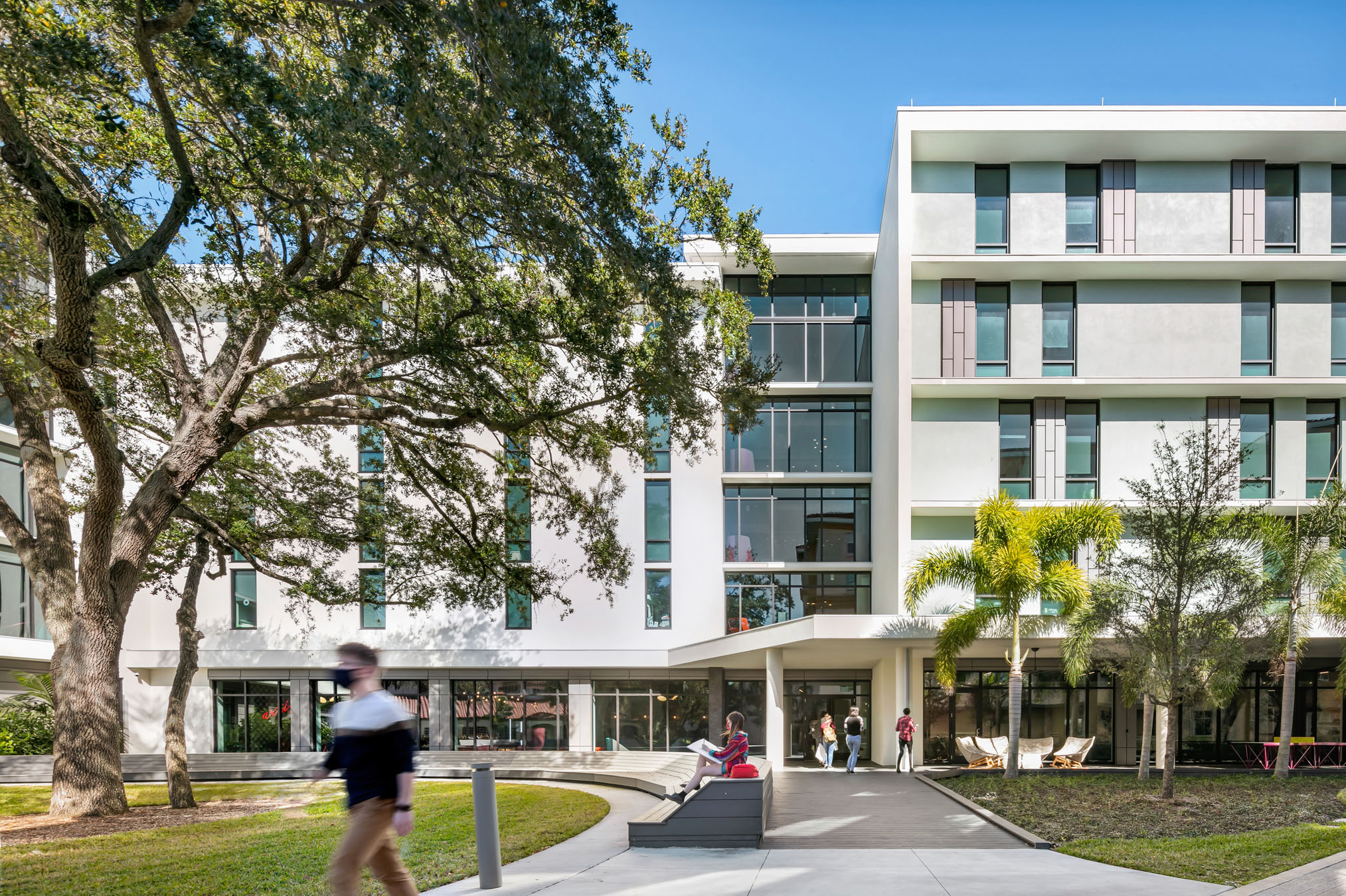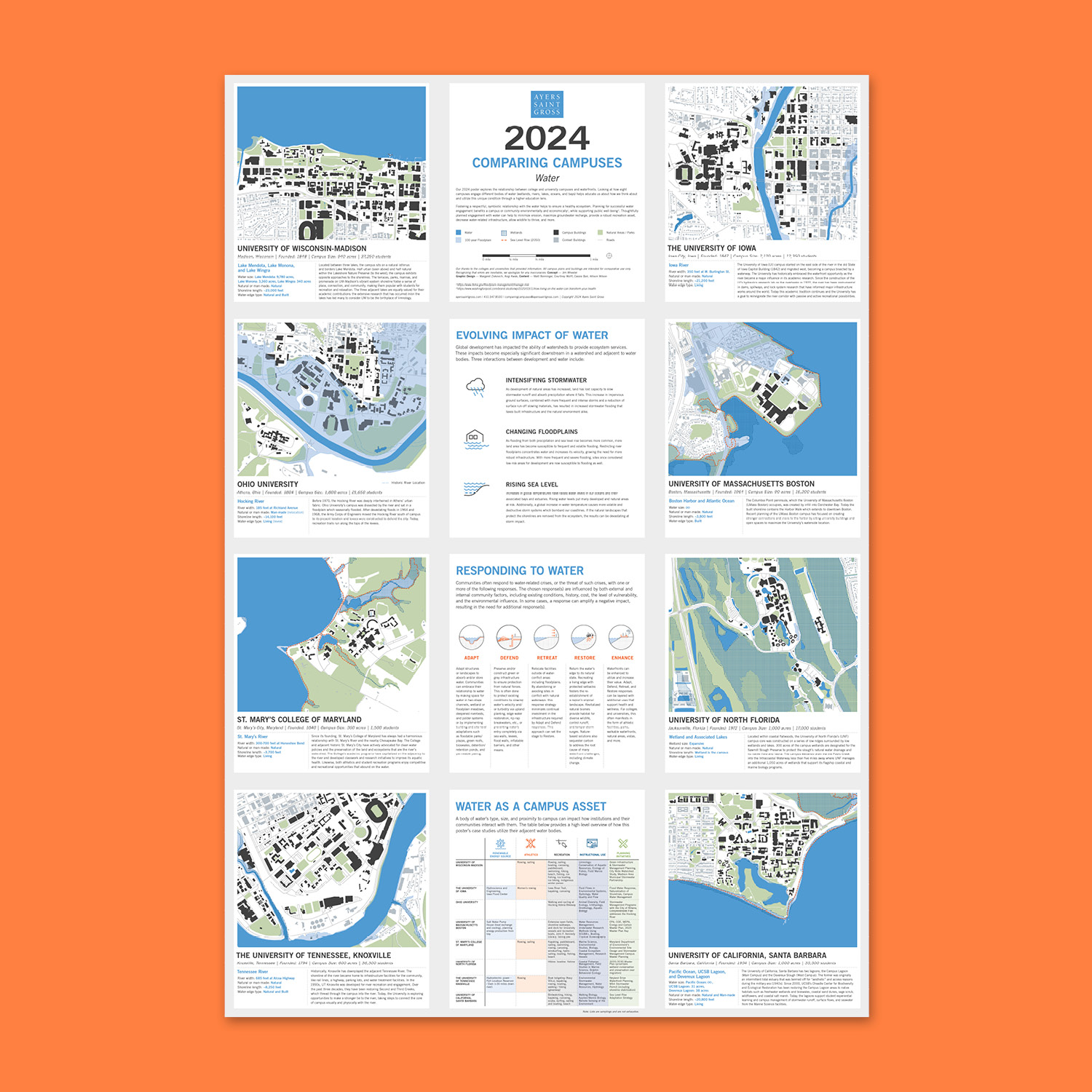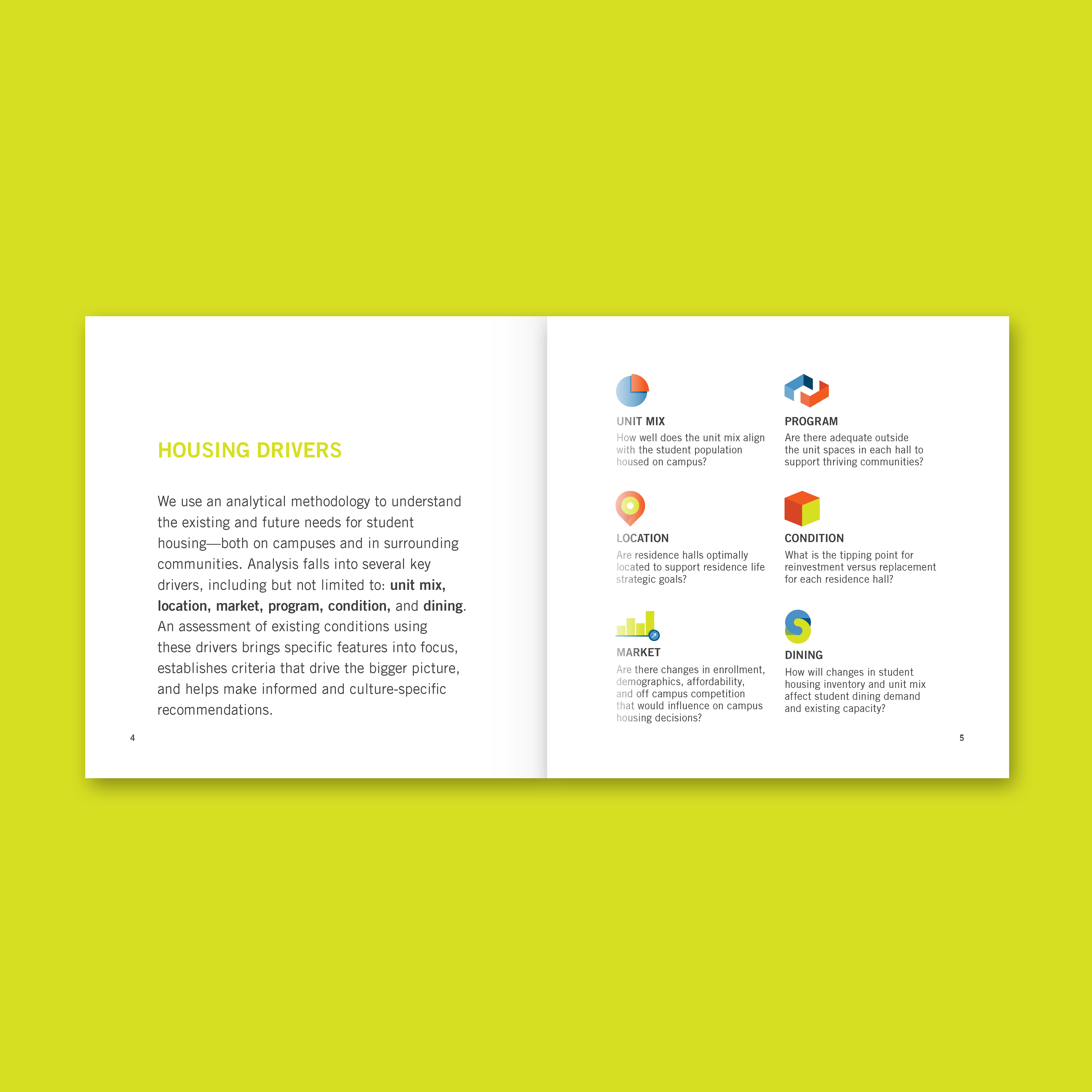The history of higher education has always been intertwined with national and global events. From world wars, the GI Bill, the space race, co-education, and macro-demographic shifts, to the recent global pandemic, all of these events have shaped higher education — its programs, priorities, and physical campus spaces. The quantity, quality, configuration, and location of space needed to support the programs of an institution are almost always being scrutinized and adjusted. Change and adaptation are constant. But sudden events, such as the recent disruption in federal funding for higher education, accelerate the urgency with which campuses must adapt.
The recent funding changes are not the only challenges facing higher education. These cuts come at a time when:
- Fundamental demographic shifts are leading to declining enrollments in many regions
- Affordability is a critical priority for students and institutions alike
- Facilities renewal and deferred maintenance needs are greater than ever
- Experiential learning, including hands-on instruction and undergraduate research, is a key part of the student experience and curriculum
- Technology is evolving at a rapid pace
- Mental health and wellness needs are growing among students, staff, and faculty
- Climate and land changes are reshaping infrastructure needs and sustainability goals
As noted in the Ayers Saint Gross article, Anticipate and Adapt: New Opportunities for Higher Education Design, institutions must navigate this convergence of challenges with flexibility and resilience. Over the past several decades, the higher education community has increased the sophistication of its space planning and data collection. Organizations such as the Society for College and University Planning (SCUP), the Association of College and University Housing Officers-International (ACUHO-I) and others have played an important role in shaping and sharing these practices across institutions.
Critical tools such as inventories of space (use, size, location, type), assessments of facilities (condition, efficacy, deferred maintenance), and utilization analyses (for classrooms, labs, offices, and other space types) have become common at many institutions to ensure the strategic alignment of funding, design and policy goals. These tools enable benchmarking against modern metrics and peers, and help institutions make informed decisions about where, when, and how to invest. While these planning tools are always valuable, they become essential when changes come suddenly.
What can you do to best position your campus now and in the future? Here are four strategies to consider:
1. Know what you have.
- Update or create a comprehensive space database to accurately document existing space type, square footage, capacity (number of seats, desks), unit control, occupant name (for offices and research labs), and critical equipment and building services.
- Increase access and improve decision-making by linking databases to other programs like GIS and creating interactive dashboards using tools like PowerBi or Tableau.
- An accurate space database will ensure greater accuracy for utilization analysis, benchmarking, and programming.
2. Know the condition of your buildings and spaces.
- Update or develop facility condition reports for all buildings, prioritizing the high-use academic and research facilities.
- Evaluate space adequacy. How well is the space supporting its intended function? Tools like the Learning Space Rating System provide an effective methodology for evaluating classrooms. We have also created and effectively employed evaluation tools for instructional labs, research labs, and workplace environments.
- Knowing the condition and quality of your space can help prioritize investments and bundle projects to maximize impact while minimizing disruption to users, helping ensure greater consistency across the institution.
3. Update space guidelines and policies.
- The way we learn, teach, research, work, and collaborate has changed dramatically in the last two decades, but many space policies and guidelines have not kept pace. Modern space guidelines reflect today’s needs for active learning, hybrid modalities, flexibility, safety, universal accessibility, and shared resources.
- Updated space guidelines are most effective for designing new facilities and major renovations but they also provide an important framework for resolving near-term space requests.
- Space governance and accountability are necessary for effective resource stewardship. Review or establish policies and committees to enable clear decision-making and ensure strategic alignment.
4. Establish a culture of planning.
- “Failing to plan is planning to fail” is a particularly relevant adage across all aspects of higher education facilities. Rapid enrollment growth or decline can stress academic and student support facilities. Faculty recruitment timelines may not align with the availability of the right type or amount of research space. Underutilization of space can drain resources and opportunities to leverage existing assets before building new. A culture of ongoing, integrated planning will not solve all issues that may arise, but it can support better problem solving and quicker decision-making.
- Run regular reports on space utilization (each semester, year, or when substantial academic or population shifts occur). Benchmark existing spaces against modern metrics and to inform opportunities for shared resources and improved collaboration.
- Future cast to understand the impacts of potential growth, contraction, or reorganization. Evaluate whether existing buildings can be renovated to meet current needs while weighing cost, sustainability goals, and phasing strategies.
- Plan at multiple scales and assess solutions across the campus-wide framework —including college/unit-level plans, space utilization and strategic plans, and building feasibility and programming studies — to stay agile and cohesive.
- Establish goals and key performance metrics (KPIs) to frame priorities and evaluate success.
- Program new construction and major renovations for specific functions while balancing flexibility of services and modularity to bridge minor user-based needs.
- Seek regular input from students, staff, and faculty to ensure that planning is grounded in user experience and supports inclusive, mission-aligned growth.
As funding cuts and demographic shifts become a new reality for campuses, it’s important to remember that many of the tools needed to navigate this moment are already in place. The challenge lies in the pace of change and the urgency of response. To respond appropriately, identify which tools your organization has already developed, collaborate openly with peer institutions to share lessons learned, and lean on your planners to align strategies and priorities.
While increased speed may bring greater potential for missteps, the planning groundwork already in place can serve as a stabilizing foundation. Change is inevitable, but approaching it with confidence, clarity, and collaboration positions your campus not only to adapt, but to thrive in a rapidly evolving landscape.






